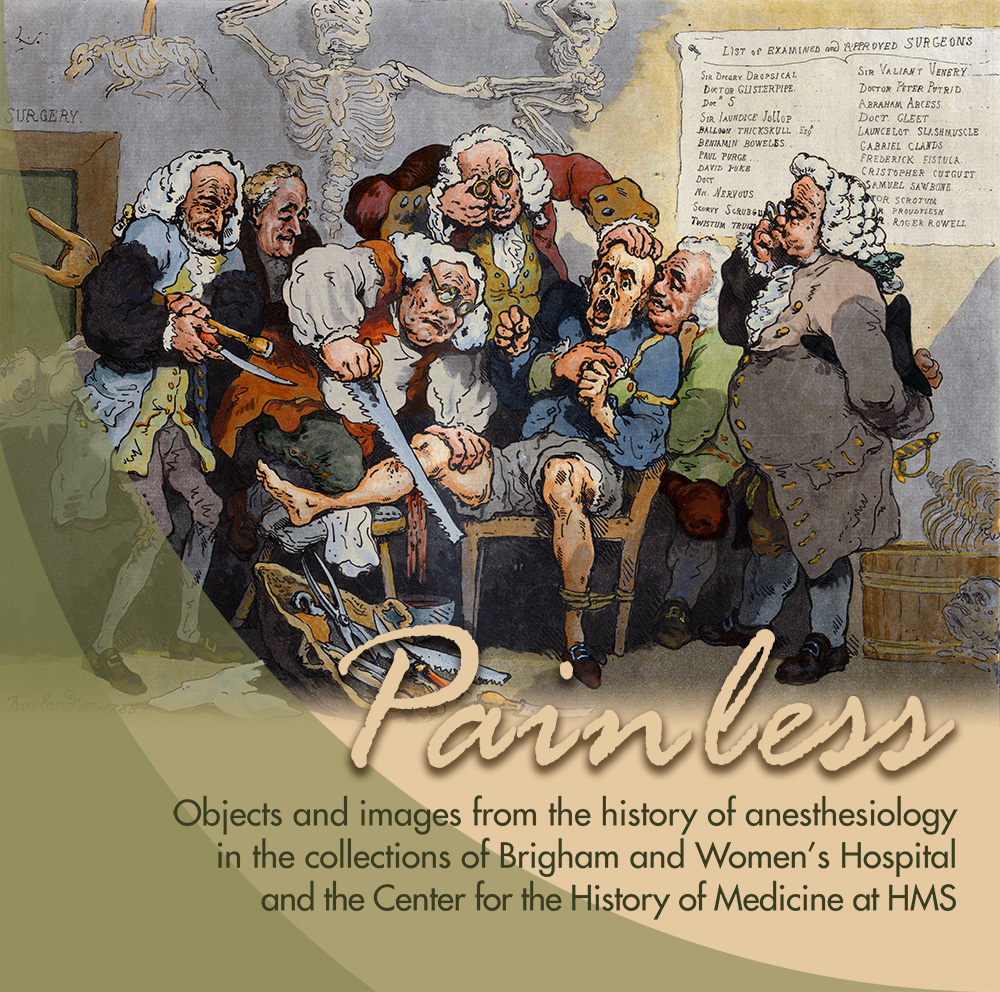
Painless is a featured exhibit on the Center for the History of Medicine’s online exhibits site, OnView. This digital recreation of a former physical installation at Harvard Medical School’s affiliate, Brigham and Women’s Hospital, highlights some significant moments in the development of anesthesiology since the discovery of ether, several of which were contributions by members of BWH and its pre-merger parent hospitals.
For example, at the Boston Lying-in Hospital Walter Channing helped make the use of anesthesia in childbirth acceptable; Burt B. Hershenson wrote the first textbook on obstetrical anesthesia; and Jess Bernard Weiss improved the epidural needle to its current universal standard. At the Peter Bent Brigham Hospital Harvey Cushing developed methods that made anesthesia safer to use; Leroy Vandam restored the tarnished reputation of spinal anesthesia; and Gertrude Gerrard helped professionalize the role of nurse anesthetists. At BWH James Philip’s designs helped transform the relationship between research hospitals and the medical device industry.
Visit the Painless exhibit online.